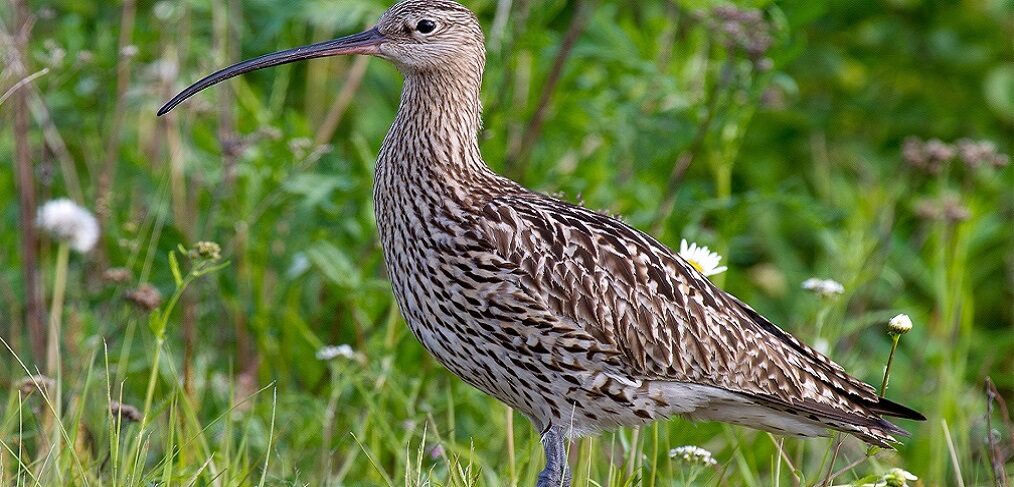
species of the week #35 – eurasian curlew
With its small head, brown marbled plumage and preference for wet habitats, the Eurasian Curlew can be confused with the Black-tailed Godwit, our species of week #31. In contrast to the black-tailed godwit, however, the long beak is completely brown and bent downward. Furthermore the Curlew could adapt better to the disappearance of bogs and can also be found in grassland.
| Distribution status in Rhineland-Palatinate | extinct |
| Residual occurance | Lower Saxony, individual animals in NRW and Bavaria |
| Last sighting in Rhineland-Palatinate | 2014 near Zeiskam |
| habitat | Bogs, wet meadows, farmland |
| Threat of | Endangerment grassland conversion, intensive agriculture, moor drainage |
The Curlew prefers large open wetlands, extensive meadows, moors, farmland, floodplains, salt marshes, lakes, ponds, estuaries and the Wadden Sea. The Curlew feeds mainly on small animals, in the interior partly also on plants. It prefers to eat invertebrates from the upper soil layers and from the surface, such as earthworms, woodlice, many insects, small molluscs, in the mudflats also small crustaceans.
Because the nests are built on the ground, they are often destroyed on fields and in intensively used grassland through mowing and mulching, so that the brood is rarely successful. A sufficient brood-success in the culture-country presupposes that the curlew has enough time to brood on the utilization-surfaces. Mowing dates should be coordinated accordingly. Remaining wet grassland and fens must be extensively used or maintained.
The curlew is a short-distance migrant. Many curlews, which breed in Scandinavia or on Iceland, move to the mudflats of Lower Saxony or Schleswig-Holstein in autumn to spend the winter and can still be observed there.
Until recently, big curlews were still hunted in France. After massive protests, the shooting permit for 6,000 specimens was withdrawn last year. However, hunting is still partly permitted in other countries.
Politically necessary
– Mire restoration
– Sufficient support for extensive grassland
– Coordinated mowing management
To the other species of the week here
Picture: By Andreas Trepte – Own work, CC BY-SA 2.5, https://commons.wikimedia.org/w/index.php?curid=15771576
